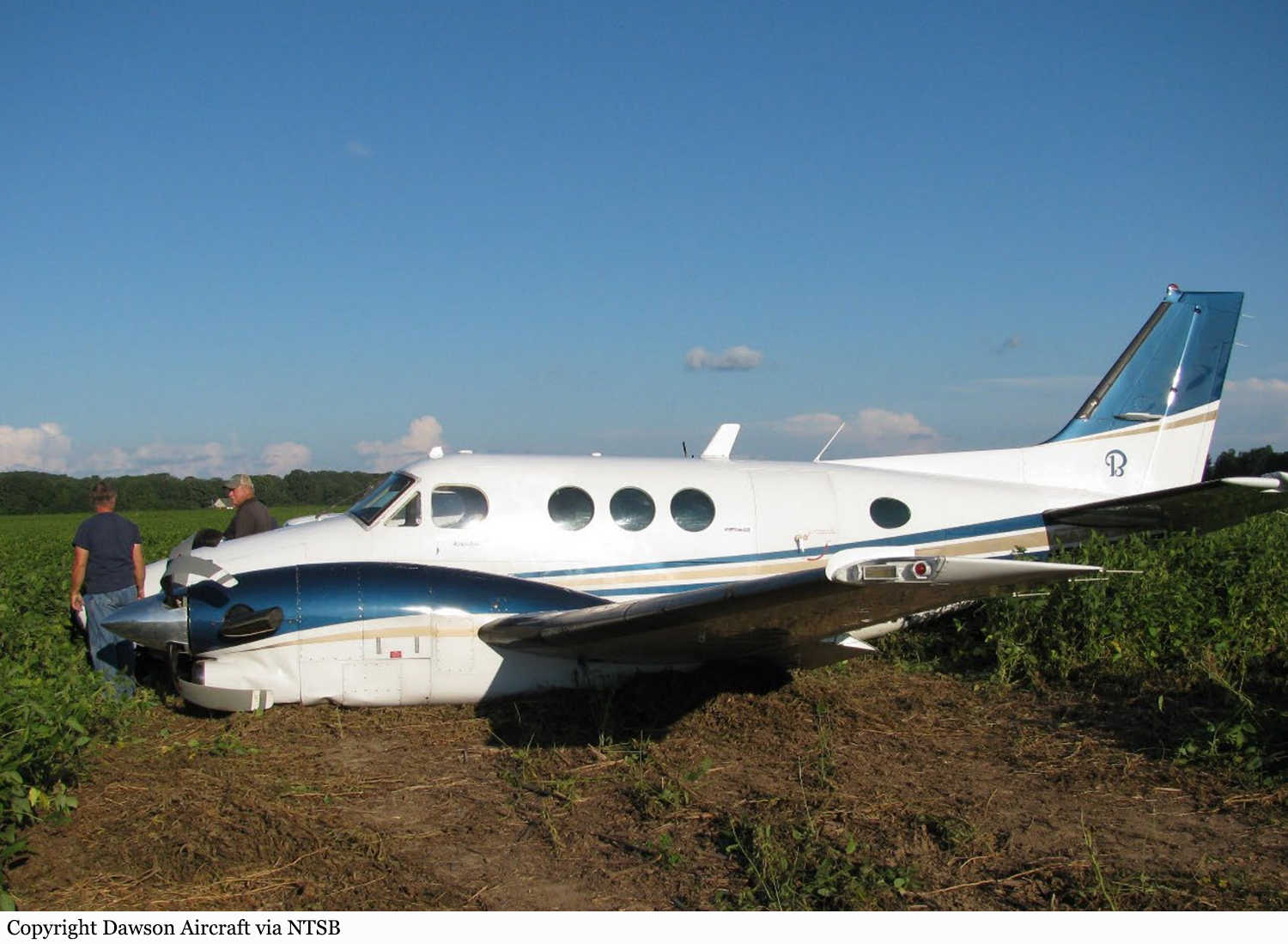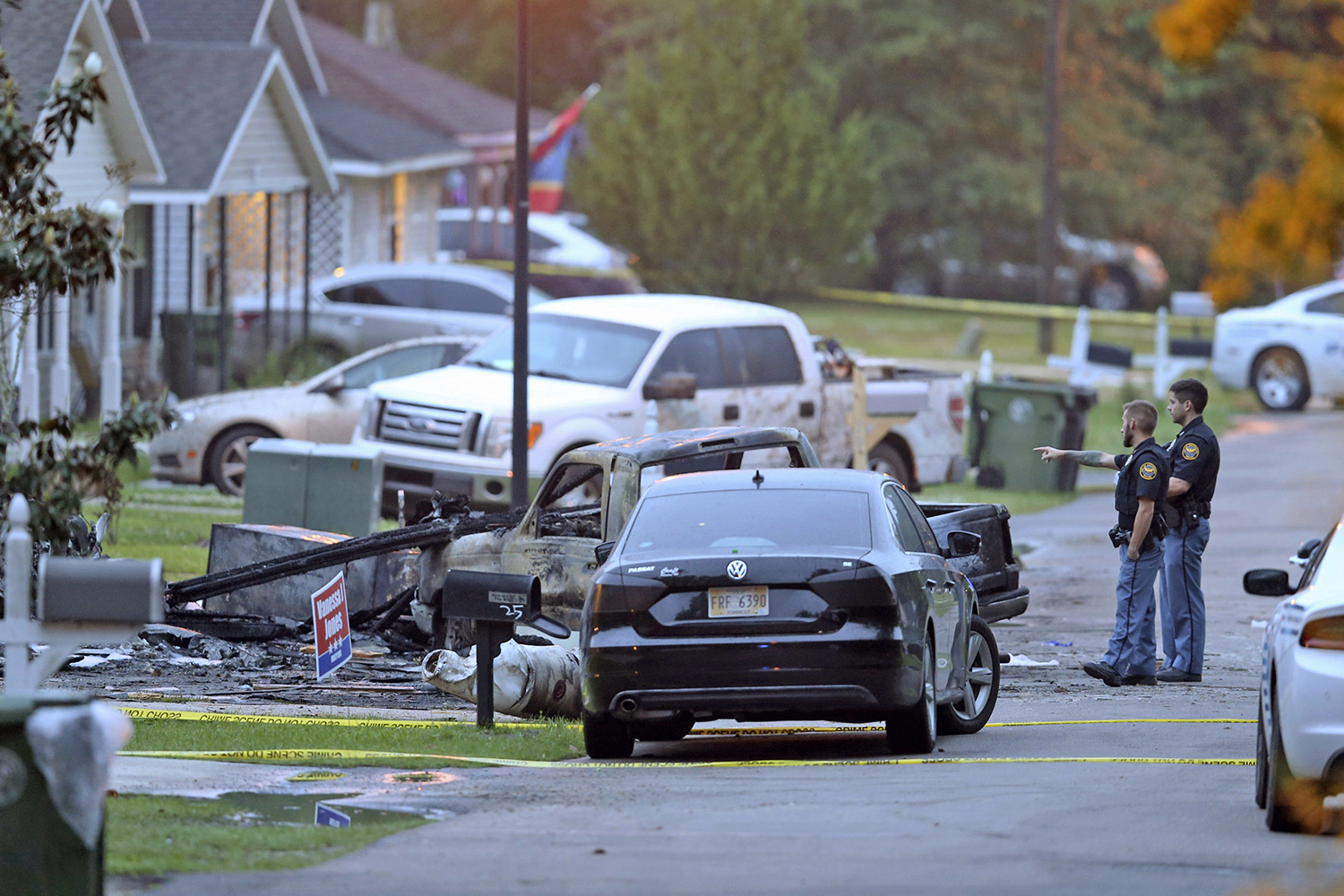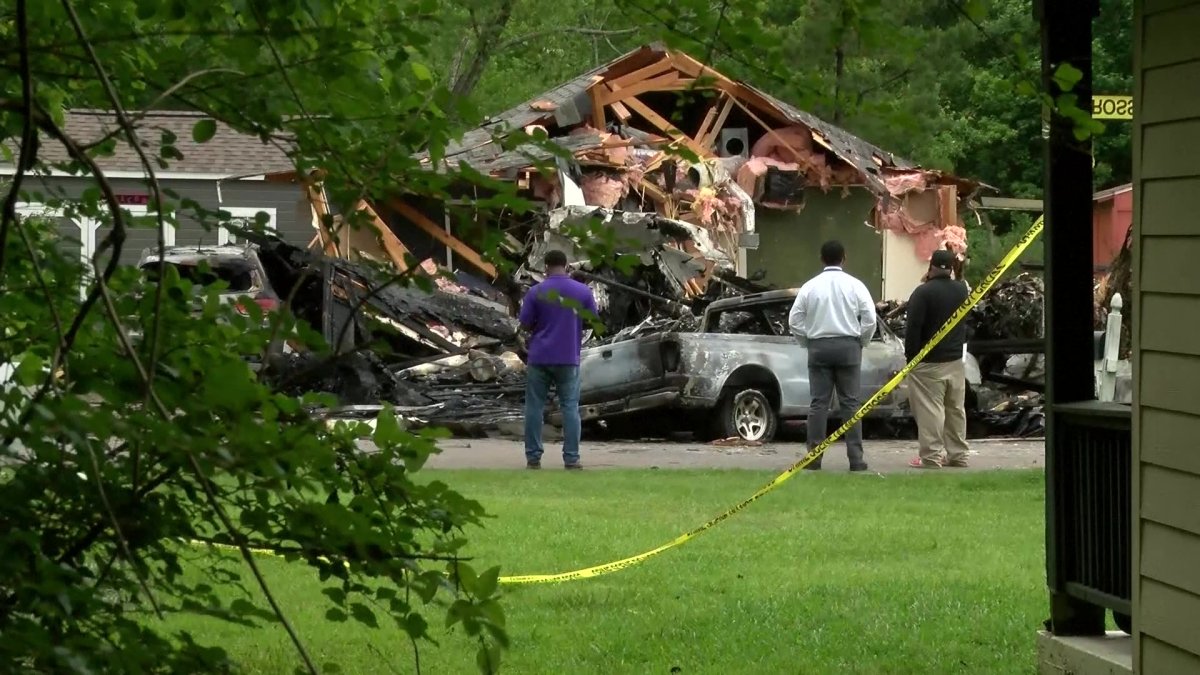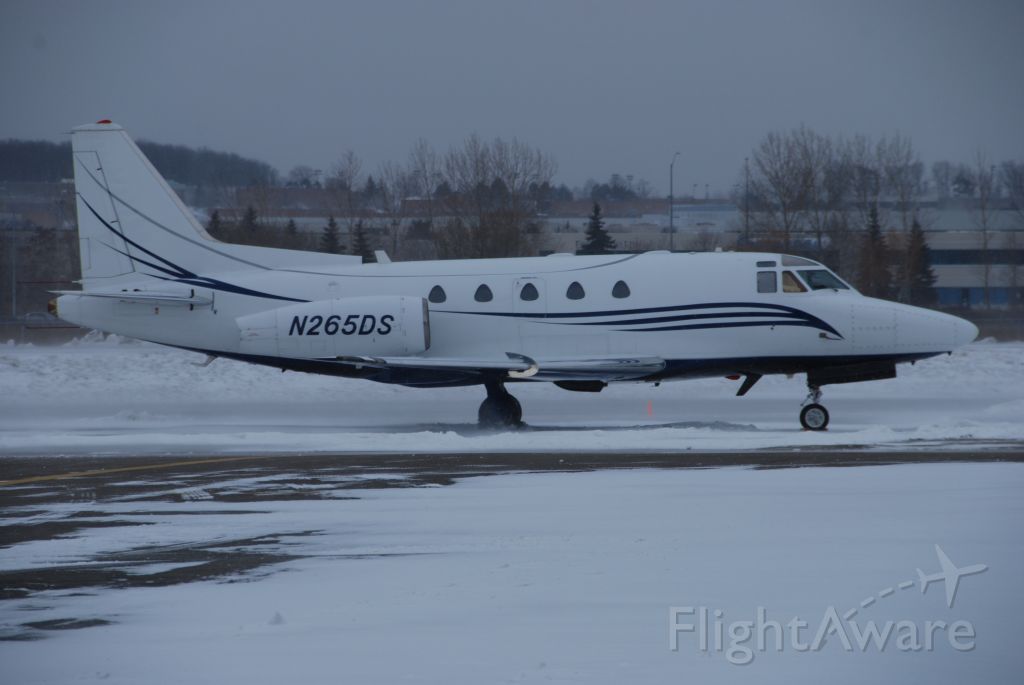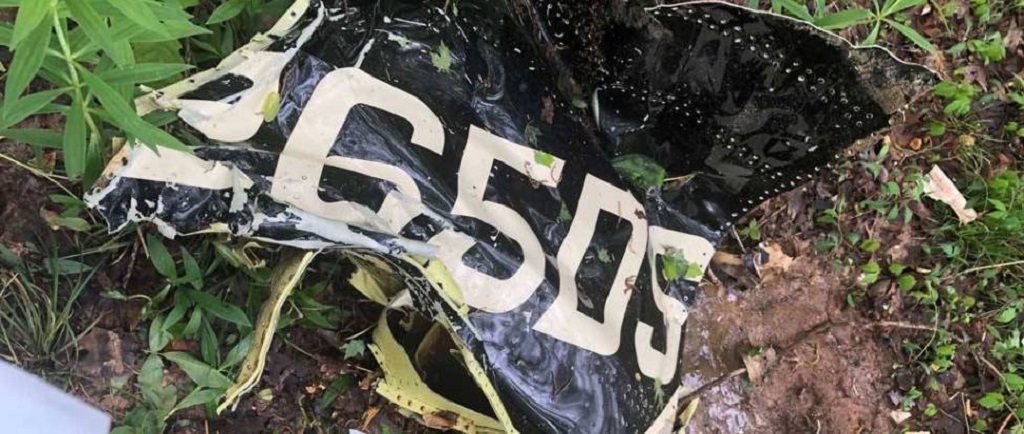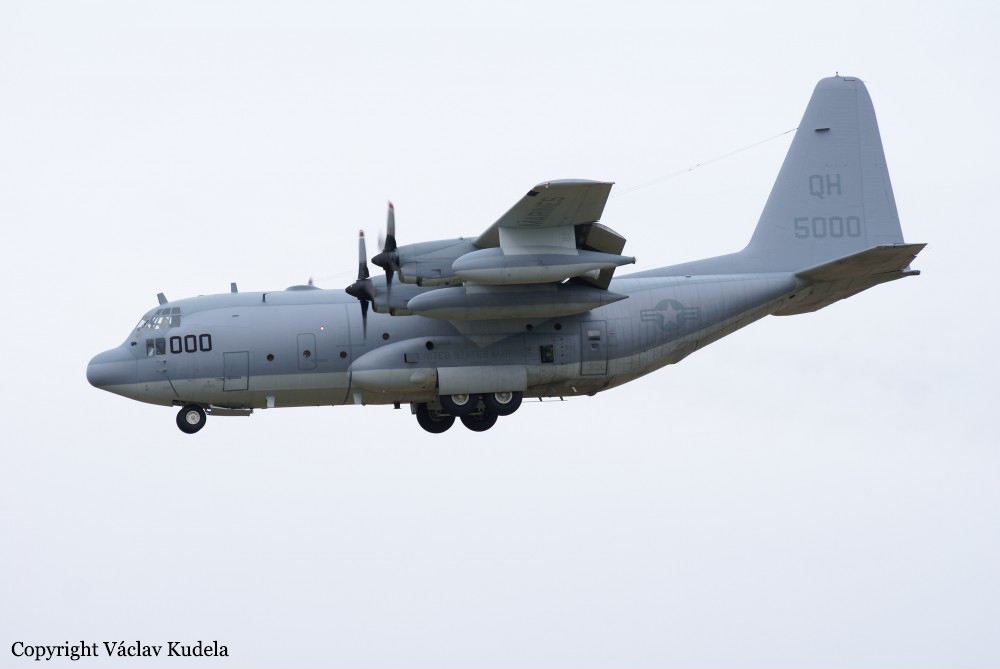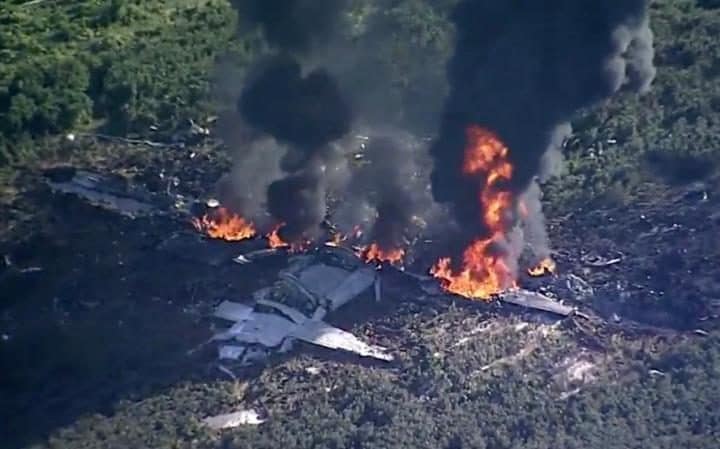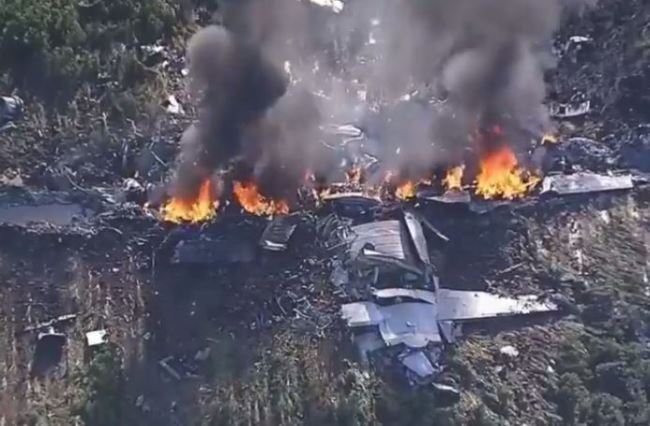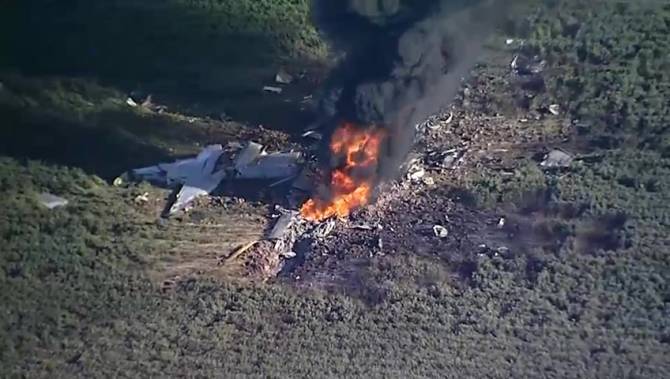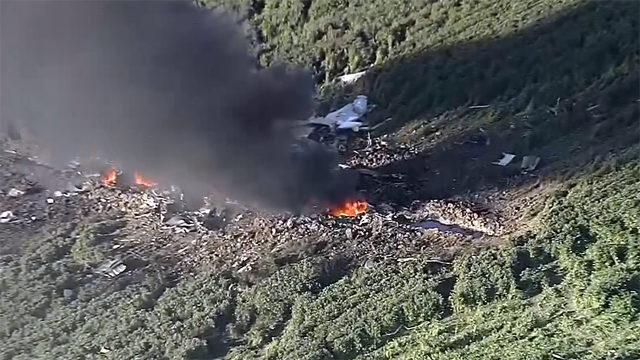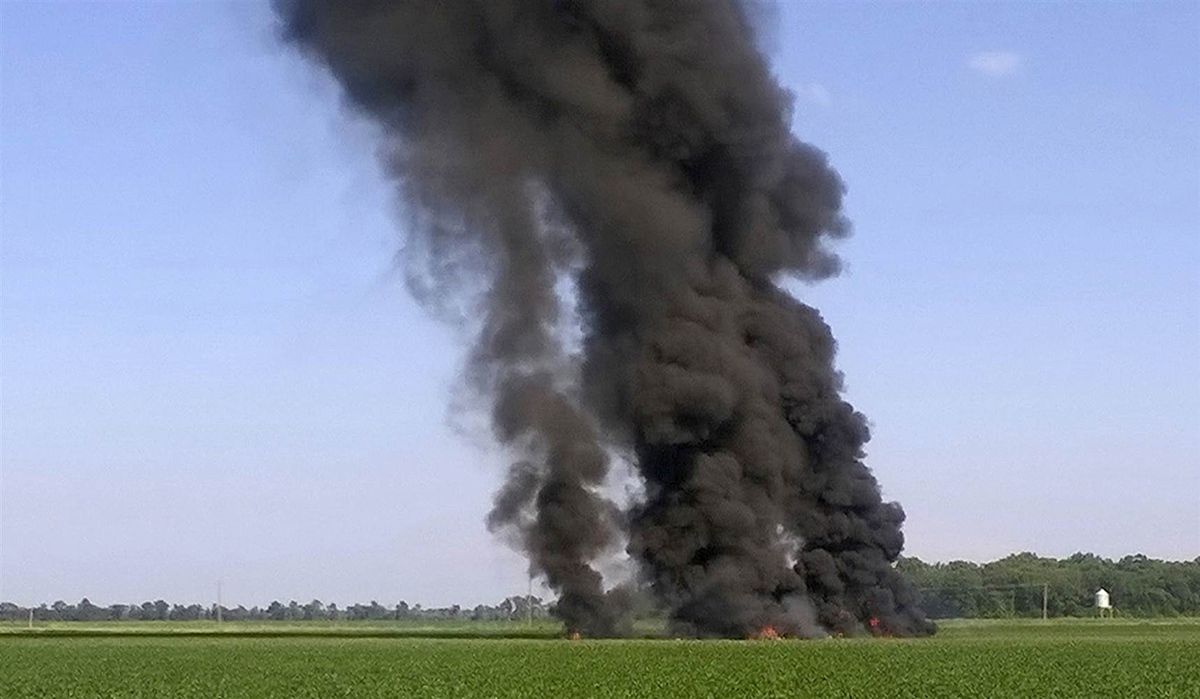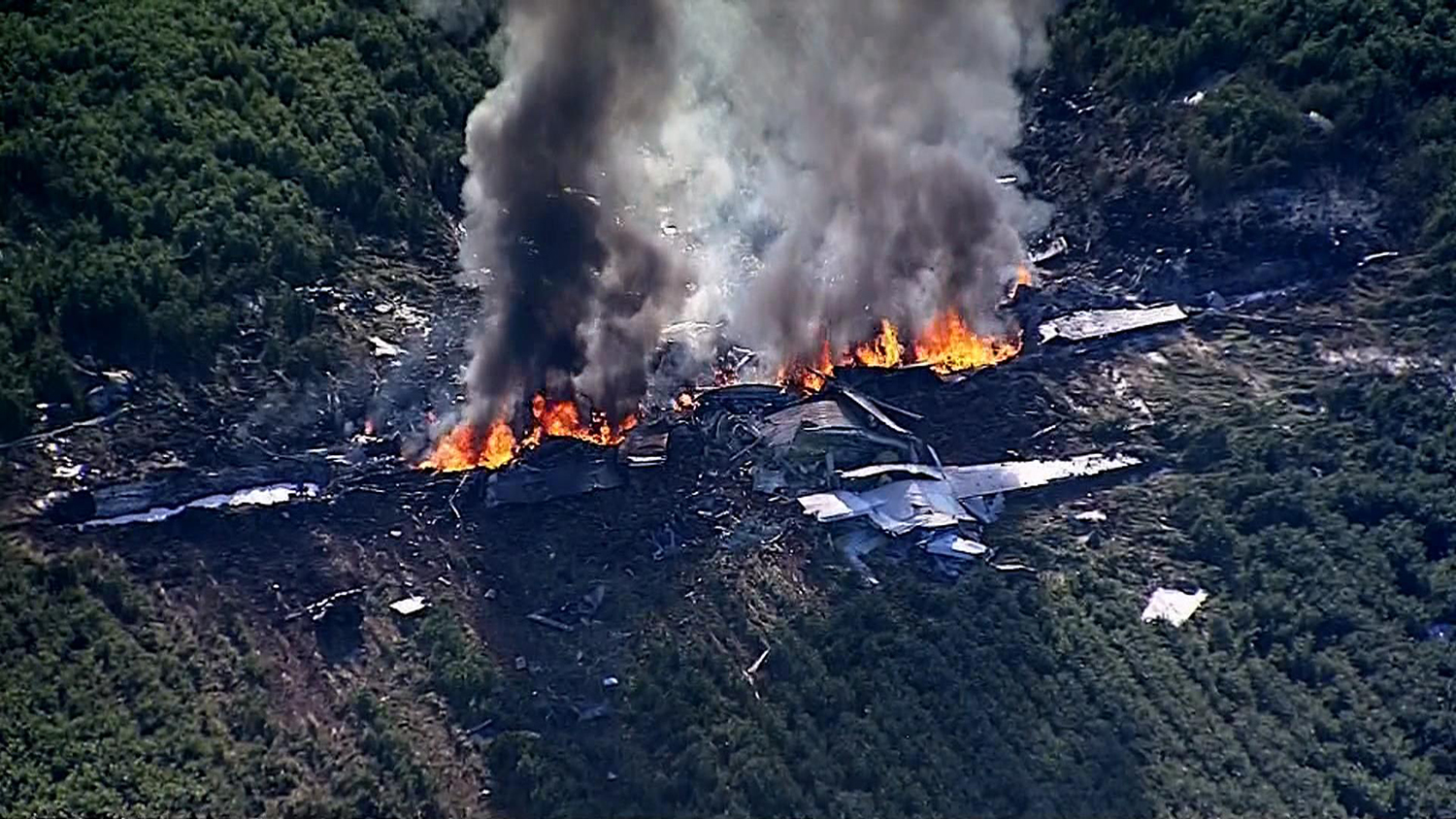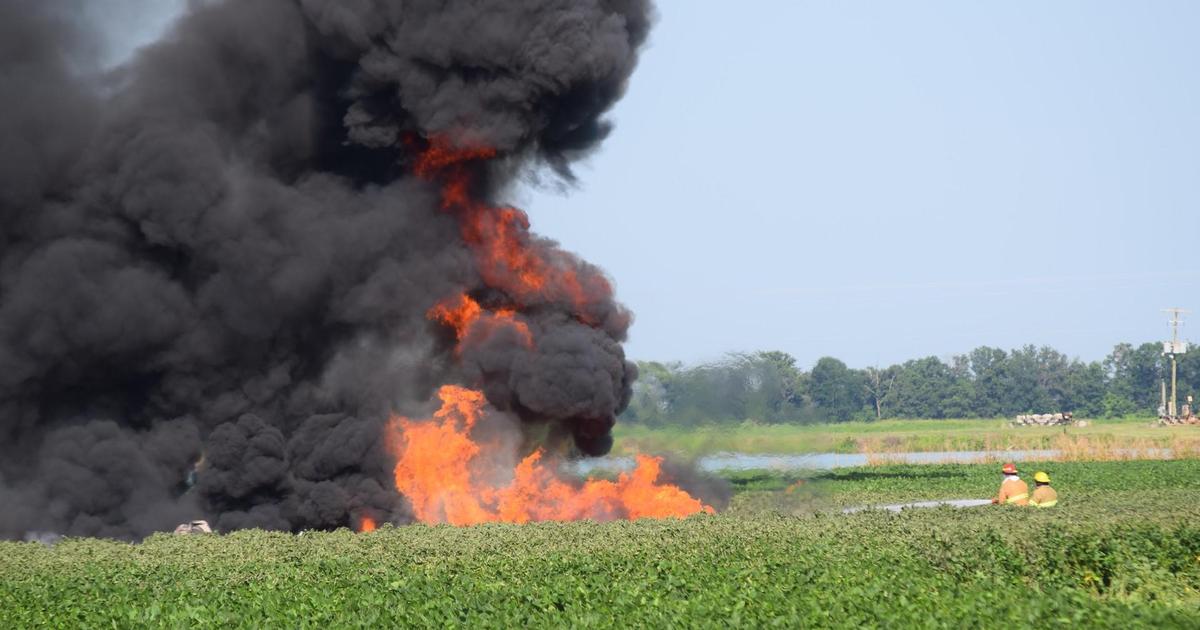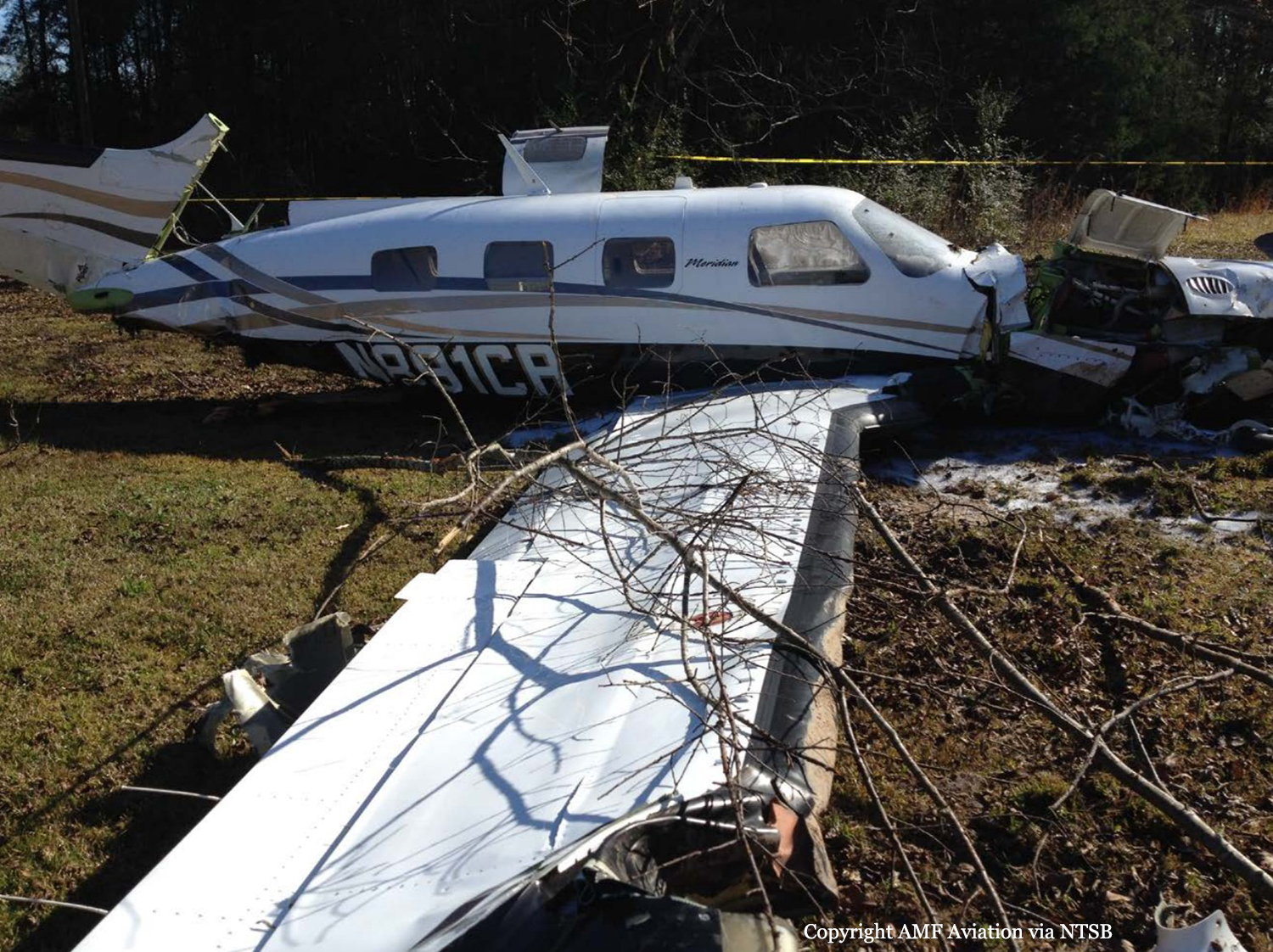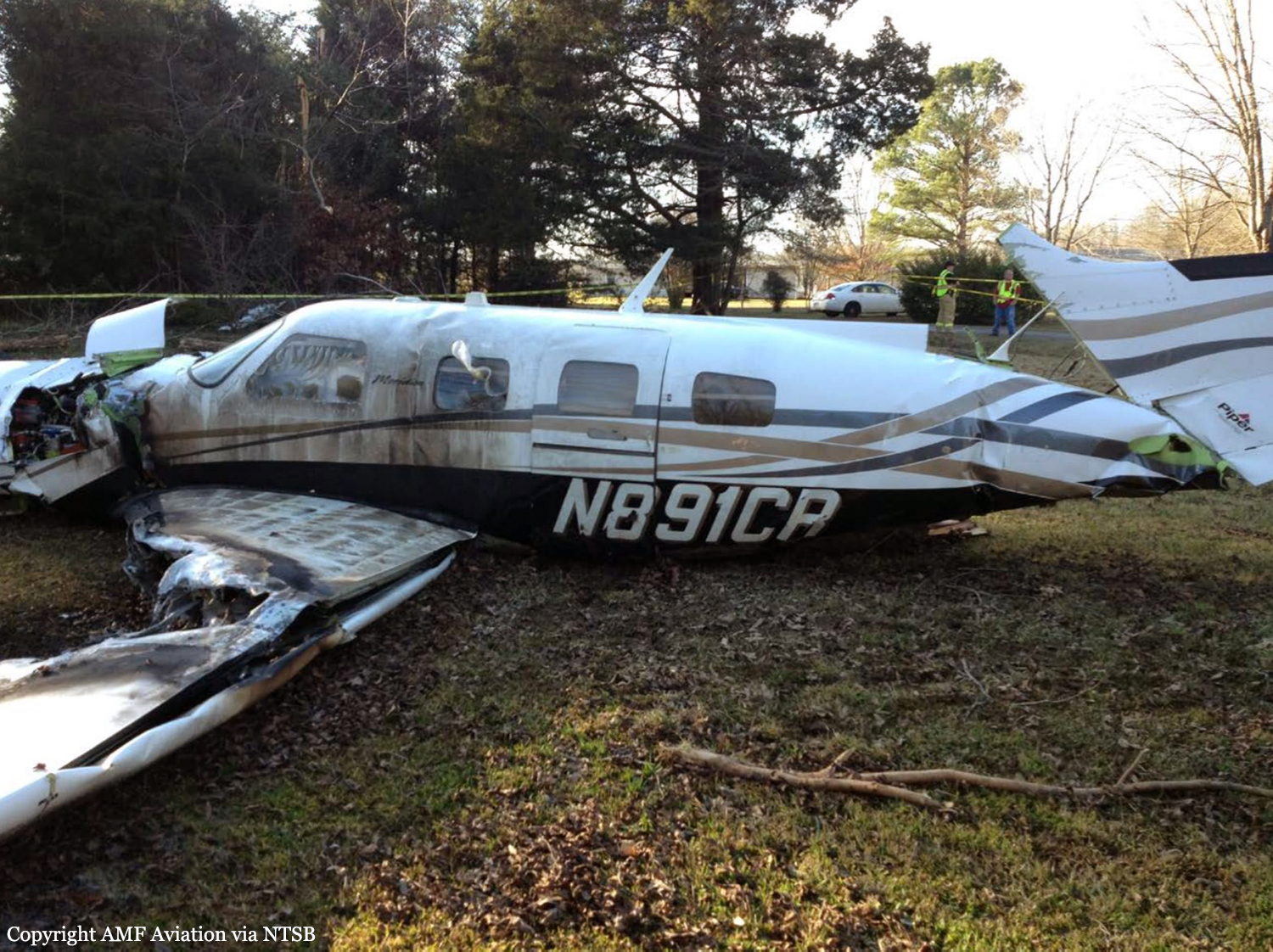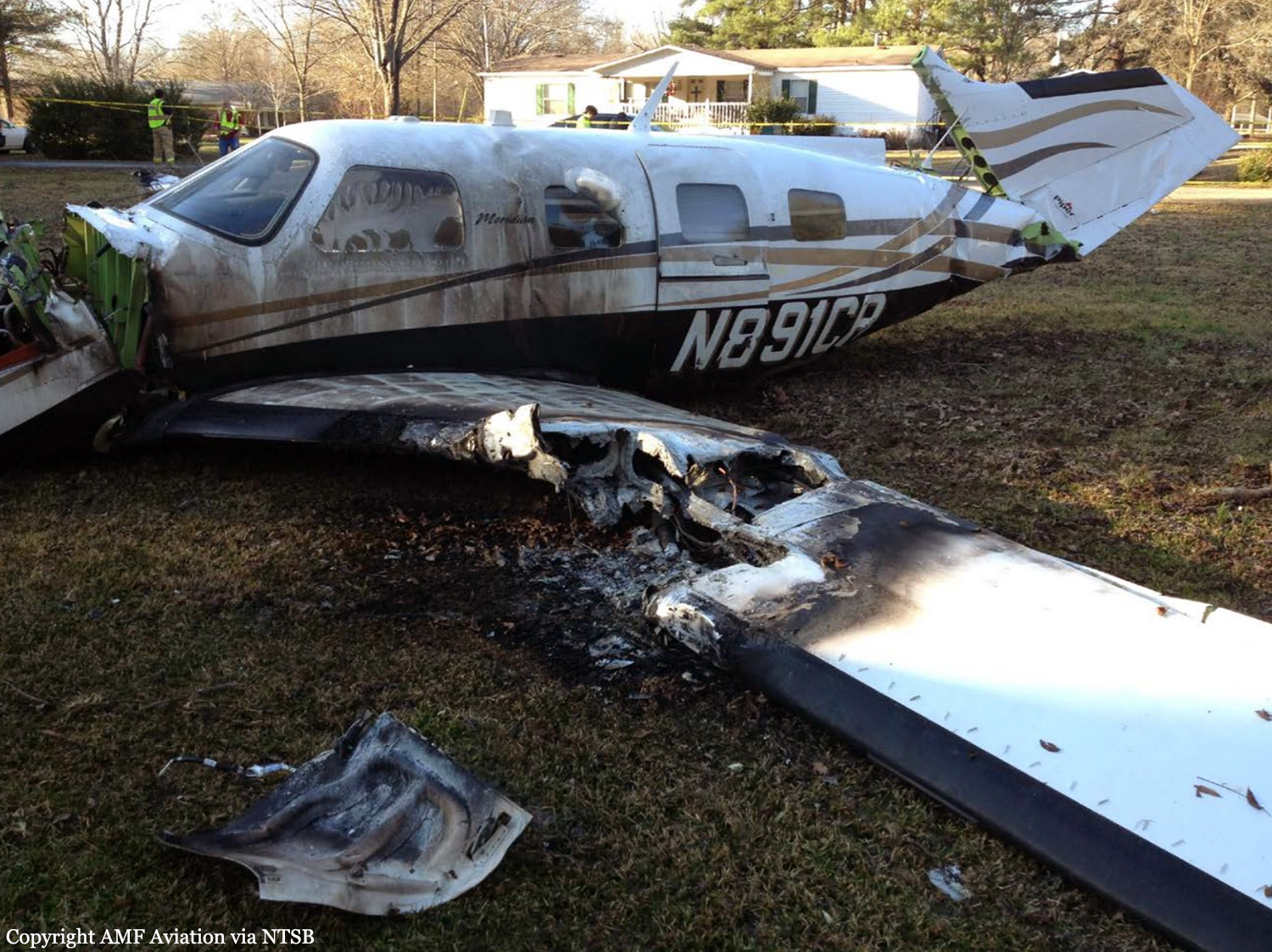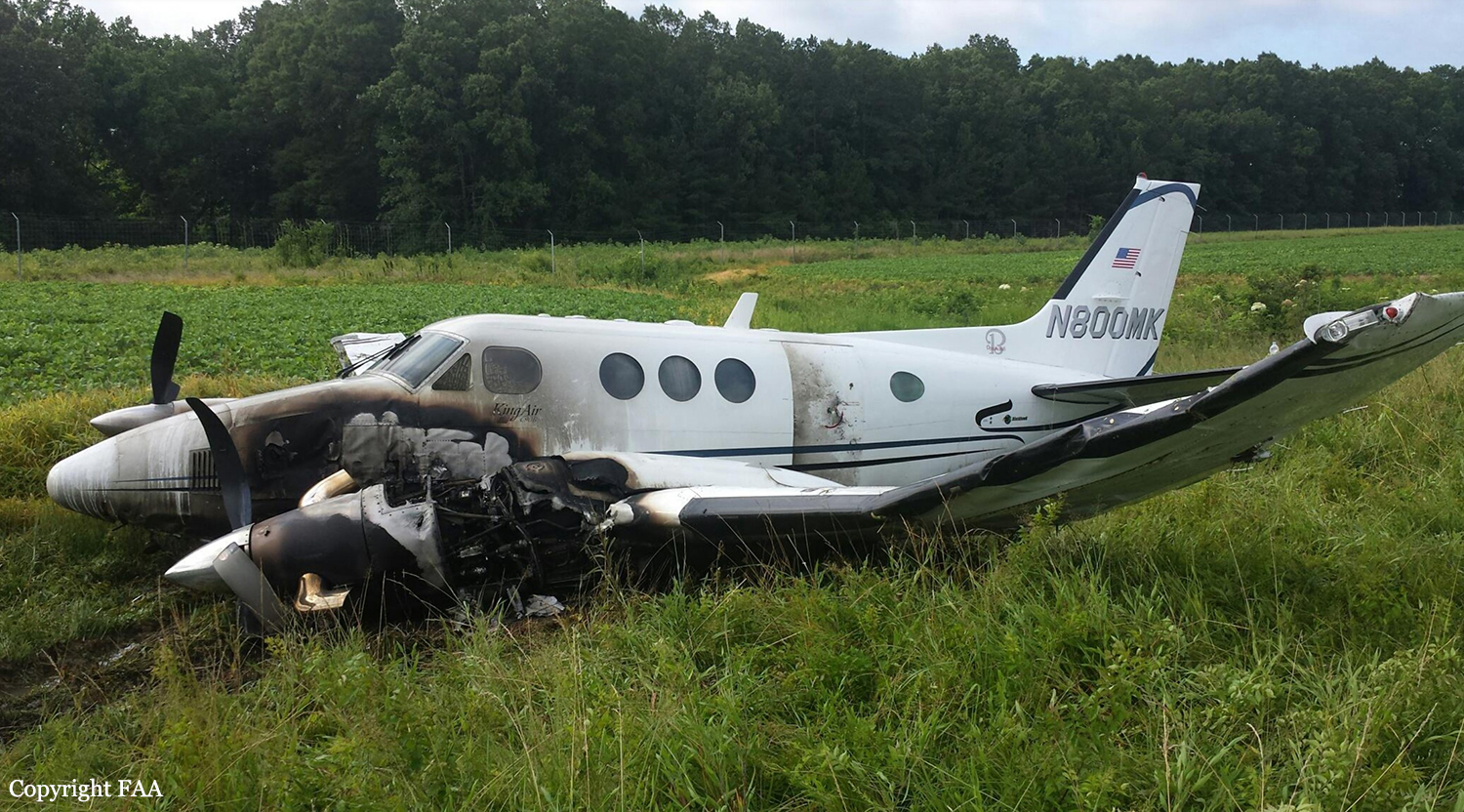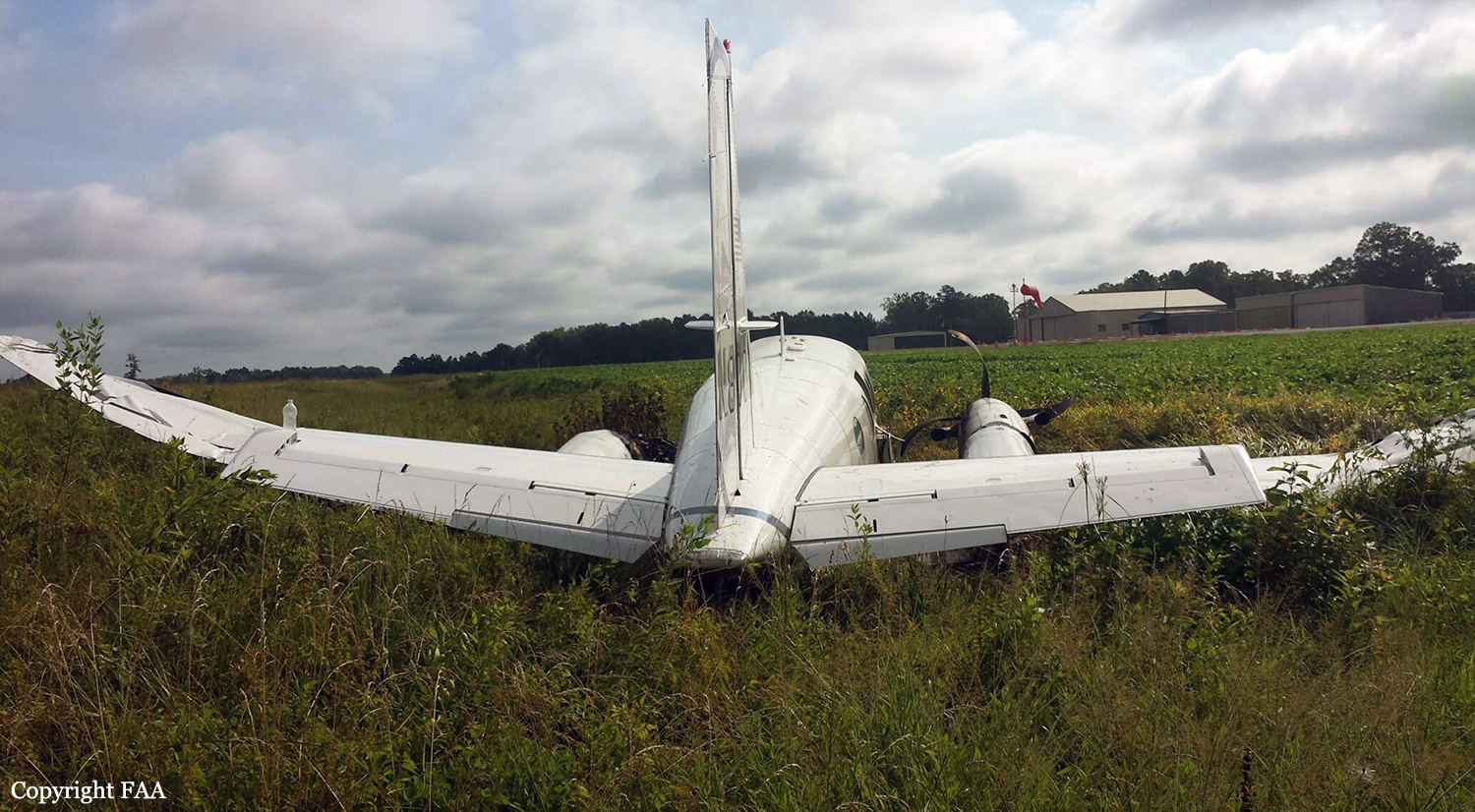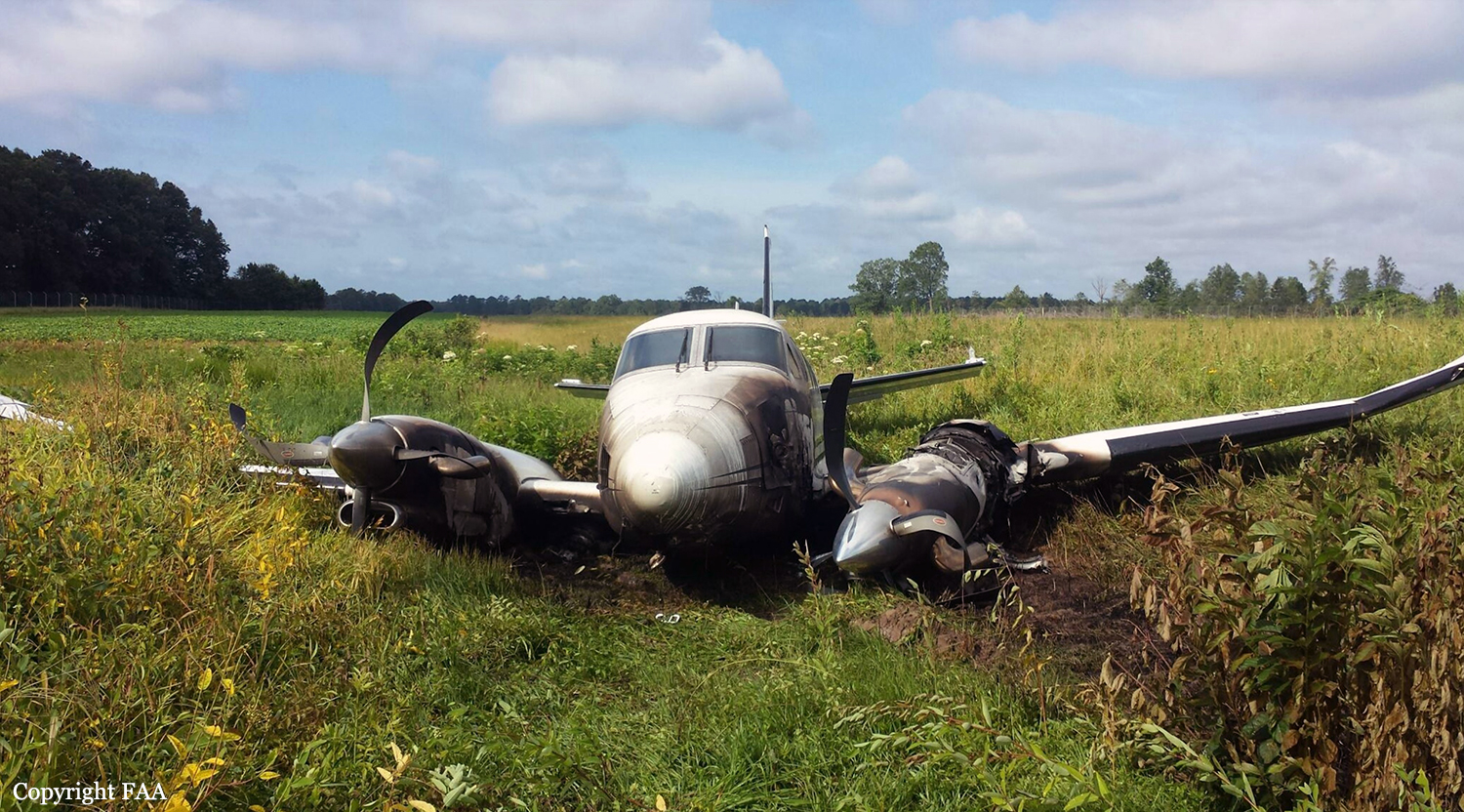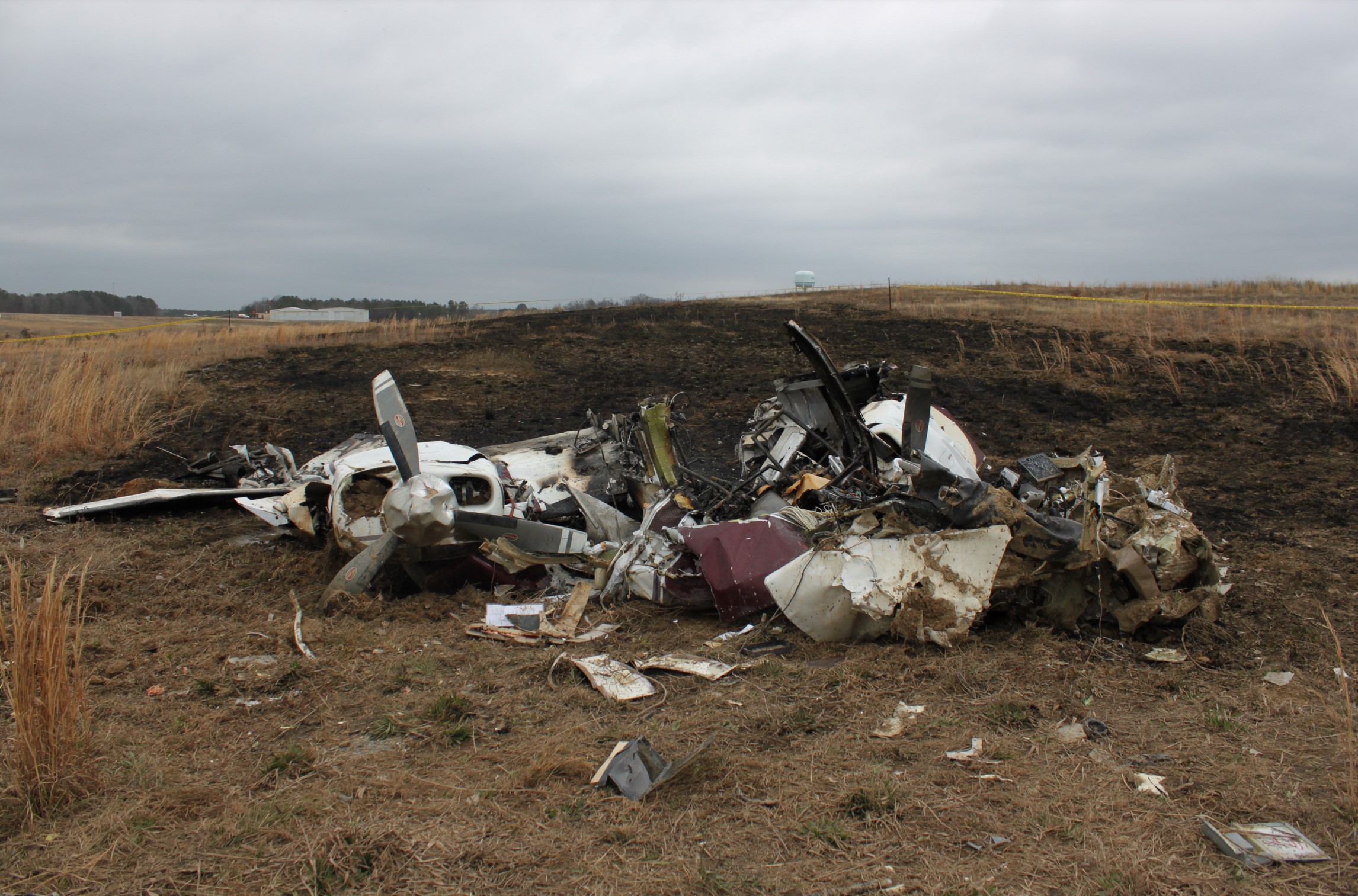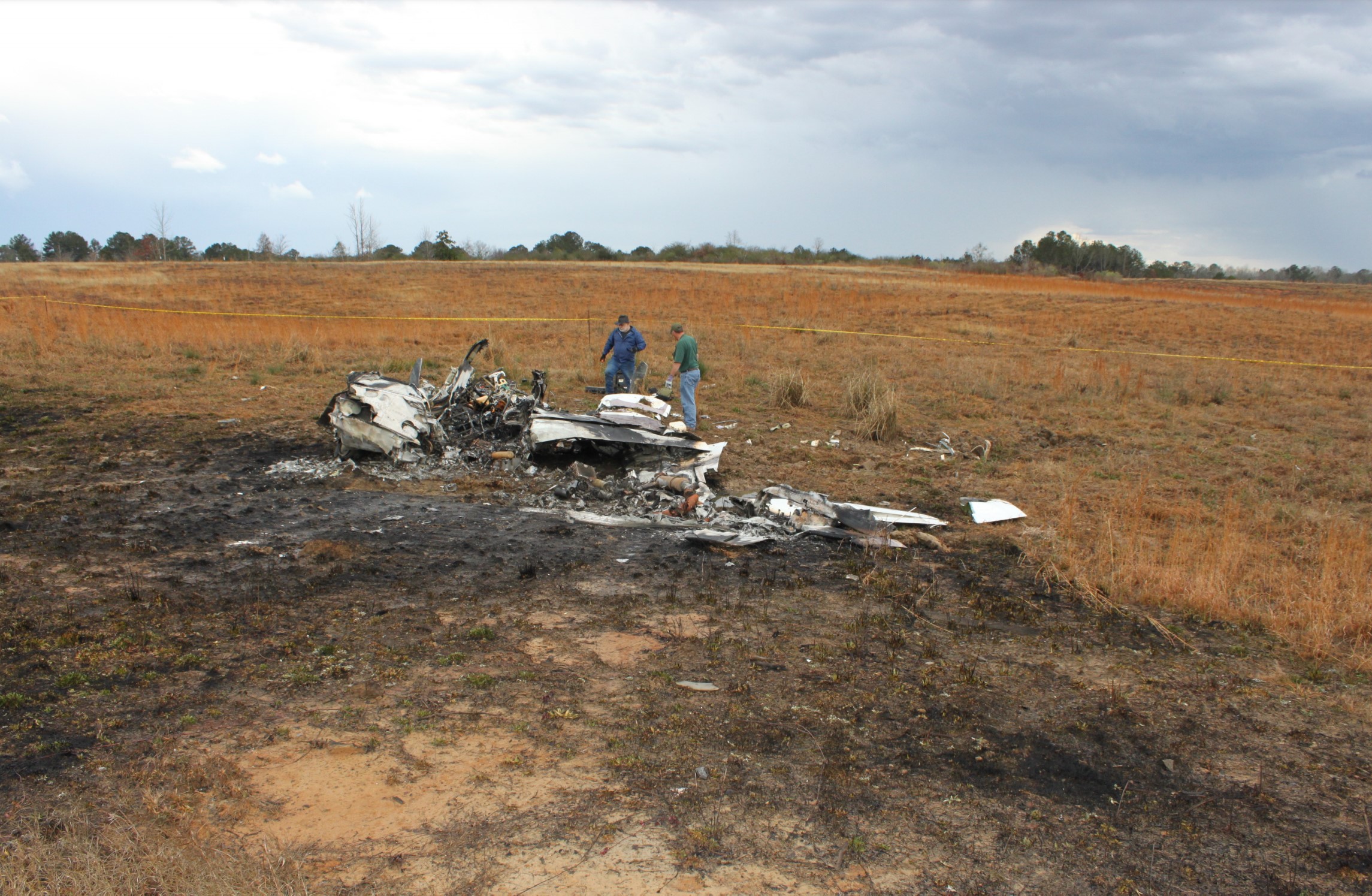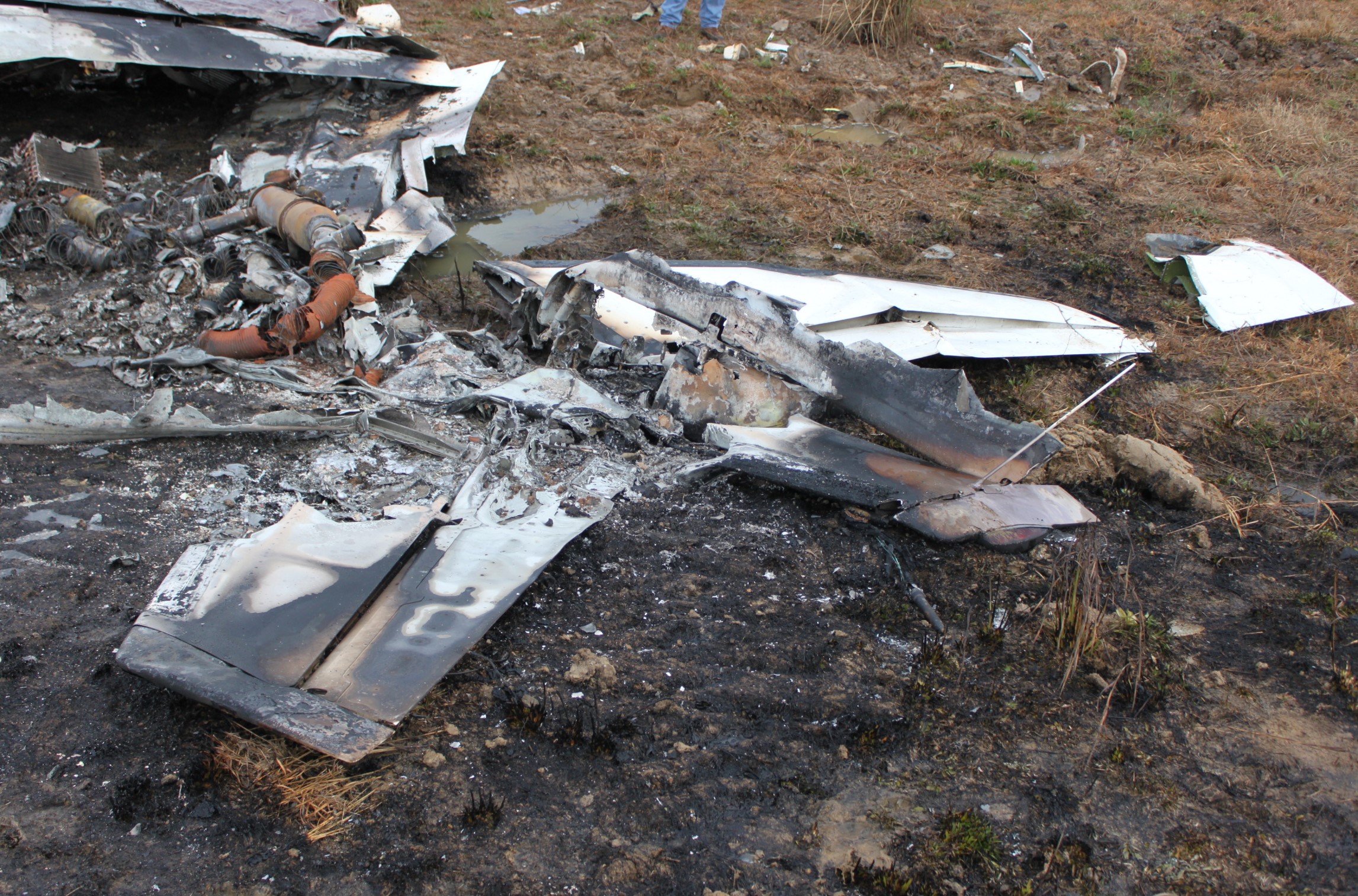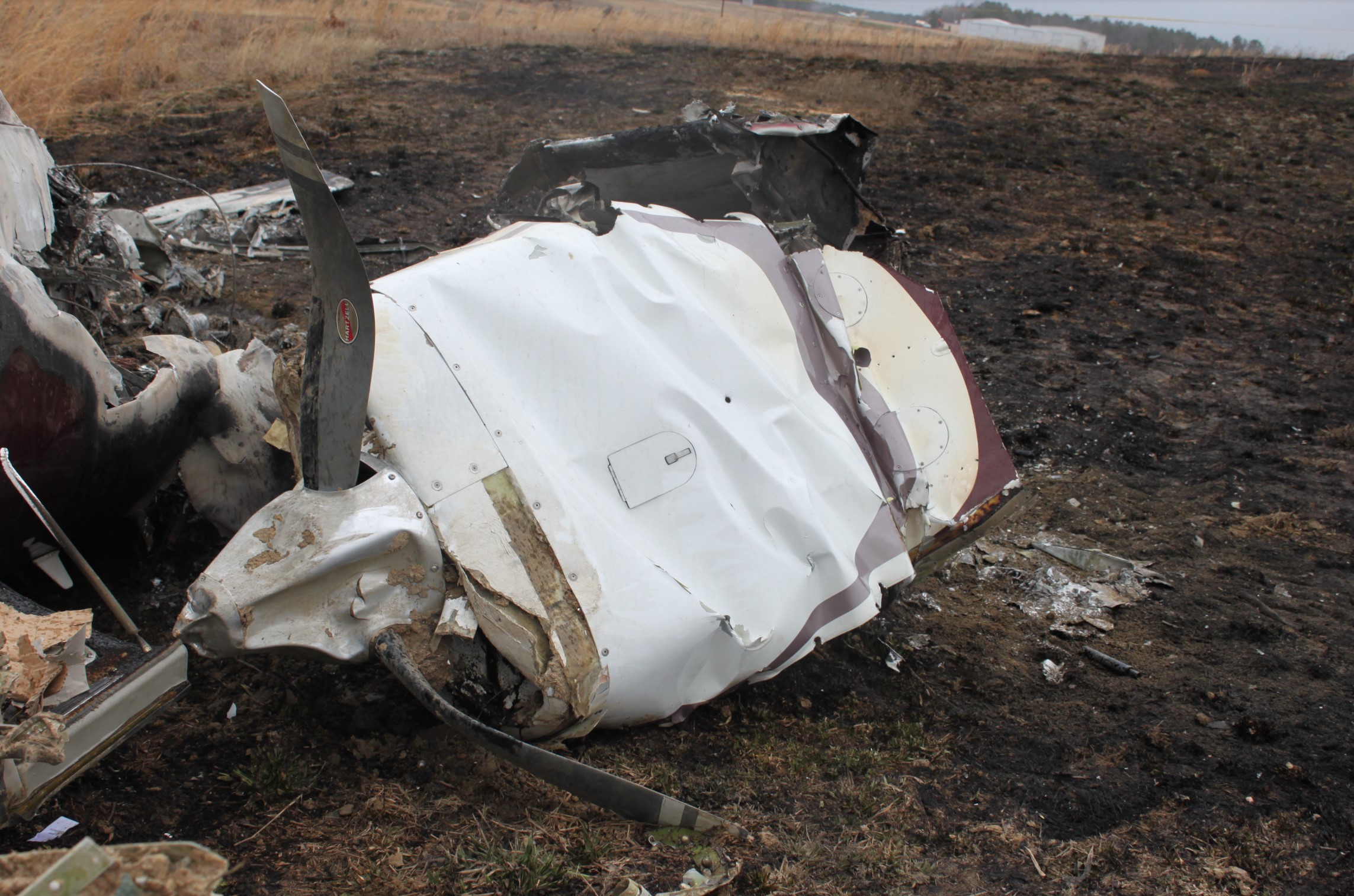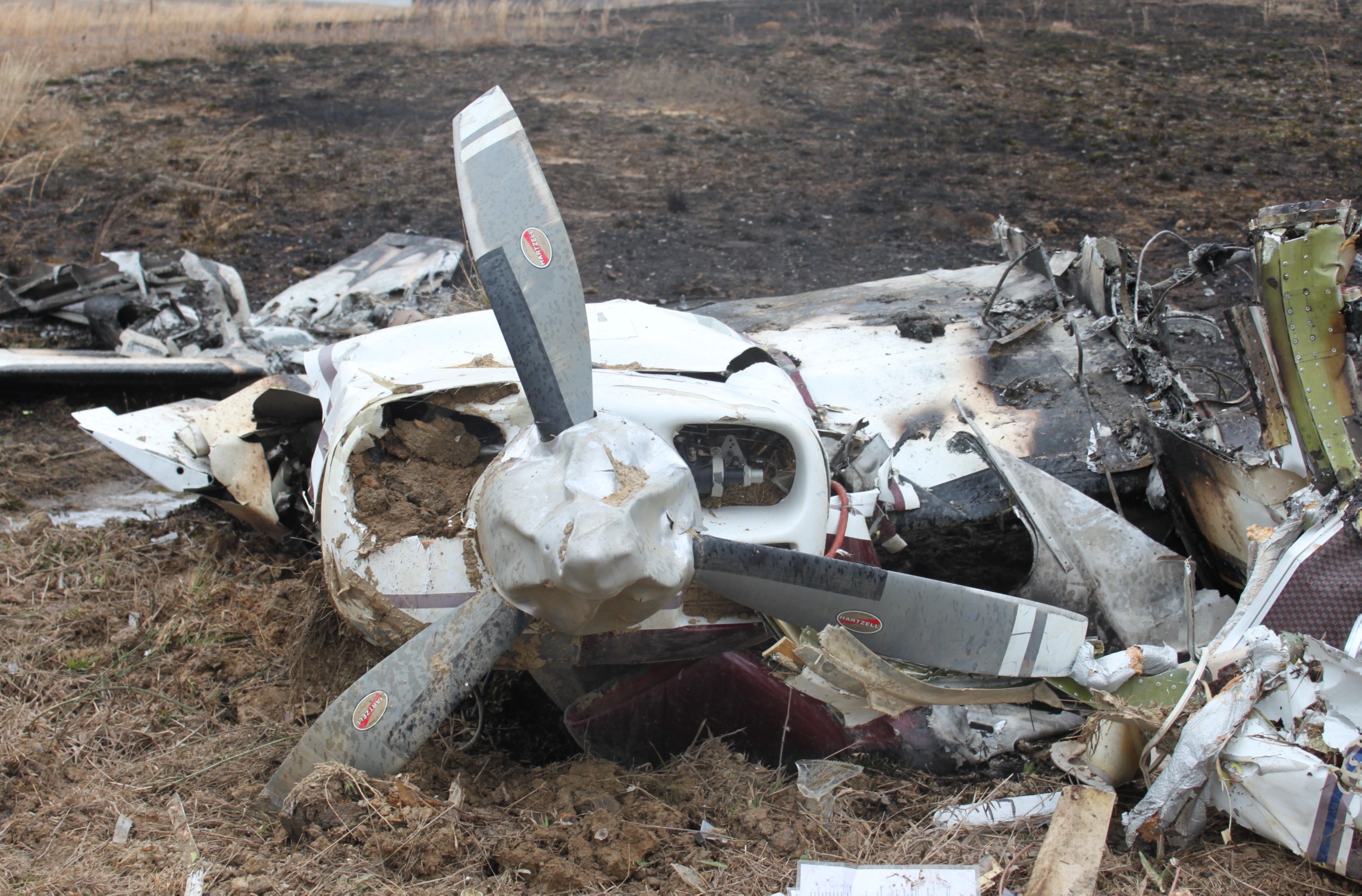Crash of a Piper PA-31-325 Navajo C in Tupelo: 2 killed
Date & Time:
Jun 3, 2023 at 0816 LT
Registration:
N4077W
Survivors:
No
Schedule:
Tupelo – Tupelo
MSN:
31-8112031
YOM:
1981
Crew on board:
1
Crew fatalities:
Pax on board:
1
Pax fatalities:
Other fatalities:
Total fatalities:
2
Captain / Total hours on type:
2833.00
Circumstances:
The pilot and pilot-rated passenger were departing on an instrument flight rules flight in the multi-engine airplane. ADS-B information showed that, just after takeoff, the airplane entered a climbing right turn, reaching a peak altitude about 300 ft above ground level and a highest ground speed about 102 knots (kts). The airplane continued in a descending, tightening right turn as its speed decreased. Analysis of the ADS-B data indicated that the airplane’s bank angle was initially about 42° with a load factor of 1.36g. As the turn continued, the bank angle increased to about 46° with a load factor of 1.44g. Under these conditions, the airplane’s stall
speed would have been about 77 kts calibrated airspeed. The airplane’s last calculated true airspeed was about 81 kts. The airplane impacted terrain adjacent to the airport and was consumed by a postimpact fire. Examination of the engines revealed no evidence of preimpact mechanical malfunctions; however, the scope of the examinations was limited due to postimpact fire damage. A sound spectrum study conducted from surveillance video of the airplane indicated that at least one of the airplane’s engines was operating around 2,550 rpm throughout the takeoff and right turn; however, the study was unable to distinguish whether the recorded sound was from one engine or both engines operating at the same rpm. Examination of the flight control system did not reveal any anomalies. During the postaccident examination of the airplane, an aileron balance cable was found separated from a swaged terminal end with a portion of the cable not located. Metallurgical examination of the separation revealed that it was consistent with being cut, most likely during recovery of the wreckage or the accident sequence. Toxicological testing revealed the presence of ethanol and n-propanol in specimens from the pilot. Although the presence of ethanol in the tested specimens means that the possibility of alcohol consumption could not be excluded, at least some of the detected ethanol was likely the result of postmortem production. Toxicological testing of the passenger revealed the potentially sedating antihistamine, cetirizine, in muscle and liver tissue; however, whether the passenger was experiencing any impairing effects from the use of cetirizine could not be determined. Based on the available information, it is likely that the pilot exceeded the airplane’s critical angle of attack while maneuvering immediately after takeoff, which resulted in a loss of control and impact with terrain; however, the circumstances that resulted in the pilot’s decision to conduct the steep right turn at low altitude could not be determined.
speed would have been about 77 kts calibrated airspeed. The airplane’s last calculated true airspeed was about 81 kts. The airplane impacted terrain adjacent to the airport and was consumed by a postimpact fire. Examination of the engines revealed no evidence of preimpact mechanical malfunctions; however, the scope of the examinations was limited due to postimpact fire damage. A sound spectrum study conducted from surveillance video of the airplane indicated that at least one of the airplane’s engines was operating around 2,550 rpm throughout the takeoff and right turn; however, the study was unable to distinguish whether the recorded sound was from one engine or both engines operating at the same rpm. Examination of the flight control system did not reveal any anomalies. During the postaccident examination of the airplane, an aileron balance cable was found separated from a swaged terminal end with a portion of the cable not located. Metallurgical examination of the separation revealed that it was consistent with being cut, most likely during recovery of the wreckage or the accident sequence. Toxicological testing revealed the presence of ethanol and n-propanol in specimens from the pilot. Although the presence of ethanol in the tested specimens means that the possibility of alcohol consumption could not be excluded, at least some of the detected ethanol was likely the result of postmortem production. Toxicological testing of the passenger revealed the potentially sedating antihistamine, cetirizine, in muscle and liver tissue; however, whether the passenger was experiencing any impairing effects from the use of cetirizine could not be determined. Based on the available information, it is likely that the pilot exceeded the airplane’s critical angle of attack while maneuvering immediately after takeoff, which resulted in a loss of control and impact with terrain; however, the circumstances that resulted in the pilot’s decision to conduct the steep right turn at low altitude could not be determined.
Probable cause:
The pilot's exceedance of the airplane's critical angle of attack while maneuvering after takeoff for reasons that could not be determined, which resulted in an aerodynamic stall and subsequent loss of control.
Final Report:



